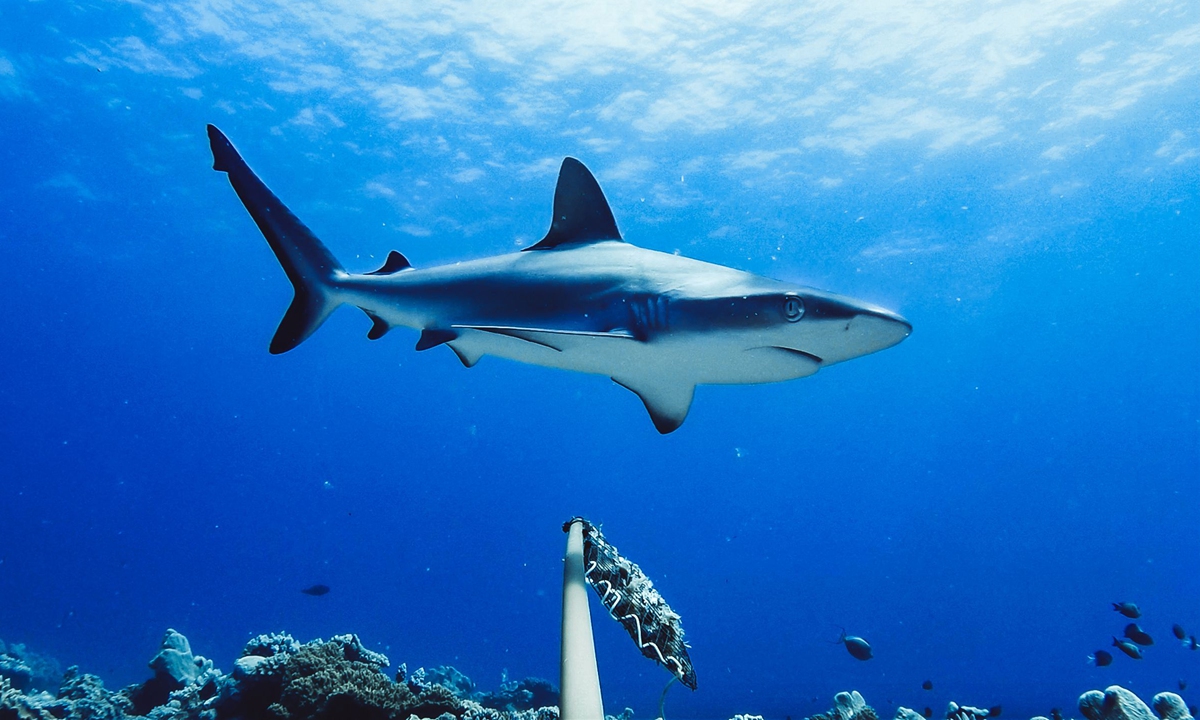Australian sharks face extinction: govt report

An undated handout photo made available by Global Finprint on July 22, 2020 shows a Grey Reef Shark in Australia. An unprecedented survey of coral reefs worldwide has revealed a shocking decline in the numbers of sharks. Photo:VCG
More than 10 percent of Australia's shark species are at risk of extinction, a government report has found.
The National Environmental Science Program marine biodiversity hub on Tuesday published the first ever complete assessment of extinction risk for all Australian sharks, rays and ghost sharks (chimaeras).
It found that Australia is home to more than a quarter of the world's cartilaginous fish species, with 182 sharks, 132 rays and 14 chimaeras calling Australian waterways home and that 12 percent, or 39 species, are facing extinction.
Peter Kyne, a senior researcher from Charles Darwin University and lead author of the report, said urgent action was needed.
"While Australia's risk is considerably lower than the global level of 37 percent, it does raise concern for the 39 Australian species assessed as having an elevated risk of extinction," he said in a media release.
"Many of our threatened sharks and rays require protection at national, state and territory levels."
He said that "there are positive signs" of protection and management working for some iconic species such as the white shark and grey nurse shark, although the assessment shows that these species "remain threatened."
The landmark report found that Australian waters also act as a refuge for threatened species in other parts of the world. "While we should celebrate the secure status of many species, we need research and management efforts for sharks," Kyne said.
Researchers from the Australian Institute of Marine Science, James Cook University and Commonwealth Scientific and Industrial Research Organization also contributed to the 442-page report.
Xinhua



